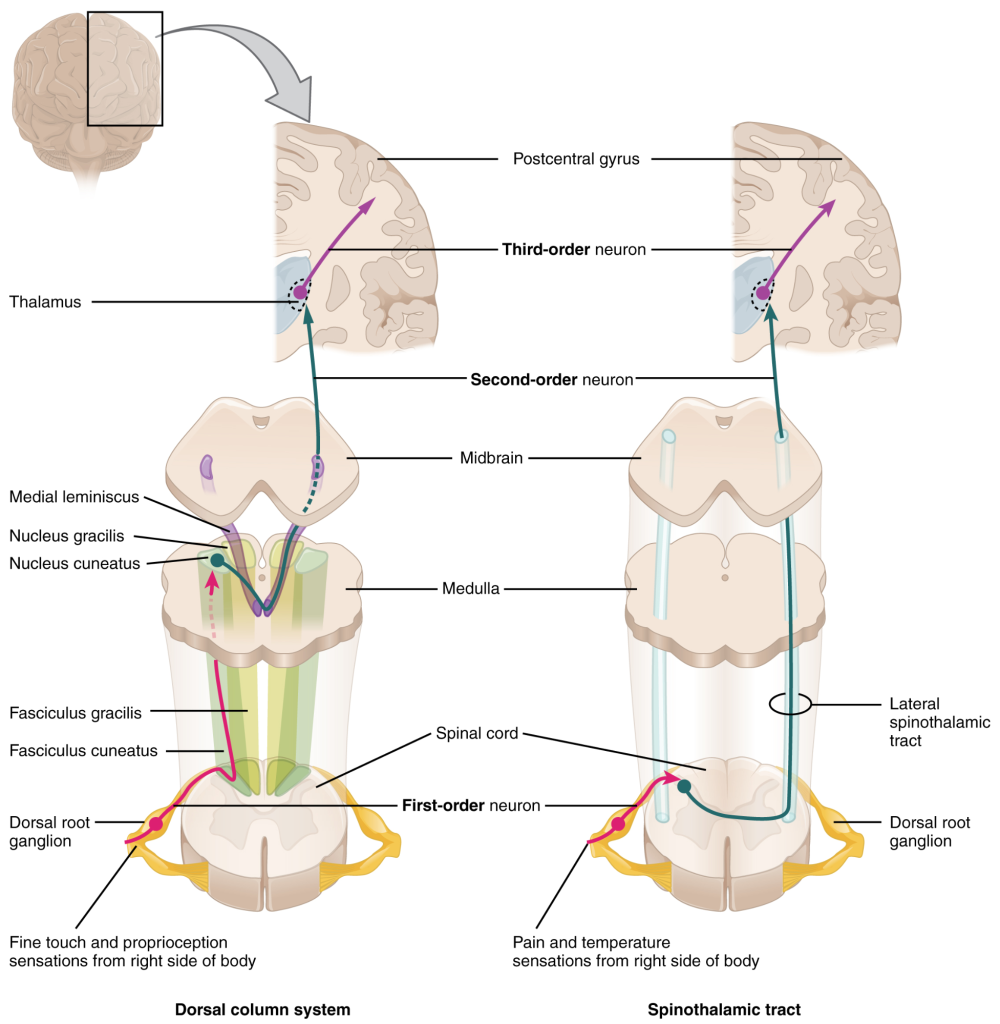Somatosensation
10
Learning Objectives
Know the similarities and differences in pain vs. touch pathways from the periphery to the brain.
Understand how the cortical targets of pain projections explain why it is such a good motivator.
There’s a few main similarities and differences to be aware of regarding pain vs. touch pathways:
The dorsal column system is primarily responsible for touch sensations and proprioception, whereas the spinothalamic tract pathway is primarily responsible for pain and temperature sensations. They are similar in that they both begin with dorsal root ganglion cells, as with most general sensory information.

The dorsal column terminates neuron one in the nuclei of the medulla, then separates into two component tracts, targeting specific fibers. The fasciculus gracilis (contains axons from the legs and lower body) targets the nucleus gracilis, while the fasciculus cuneatus (contains axons from the upper body and arms) targets the nucleus cuneatus.
The spinothalamic tract neurons extend their axons to the dorsal horn, where they synapse with the second neuron. Axons from these second neurons then decussate within the spinal cord and ascend to the brain and enter the thalamus, where each synapses with the third neuron in its respective pathway. In the dorsal column system, this decussation takes place in the brain stem; in the spinothalamic pathway, it takes place in the spinal cord at the same spinal cord level at which the information entered.
Not only does pain project to the contralateral primary somatosensory cortex, but it does to the limbic system as well. If you want to motivate a strong reaction from someone, the limbic system is a good target!
Check out this Crash Course video linked here and included below to learn more!
CC LICENSED CONTENT, SHARED PREVIOUSLY
OpenStax, Anatomy and Physiology Chapter 14.2 Central Processing
Provided by: Rice University.
Download for free at https://openstax.org/books/anatomy-and-physiology/pages/14-2-central-processing
License: CC Attribution 4.0
Adapted by: Shawn George
Cheryl Olman PSY 3031 Detailed Outline
Provided by: University of Minnesota
Download for free at http://vision.psych.umn.edu/users/caolman/courses/PSY3031/
License of original source: CC Attribution 4.0
Adapted by: Shawn George

